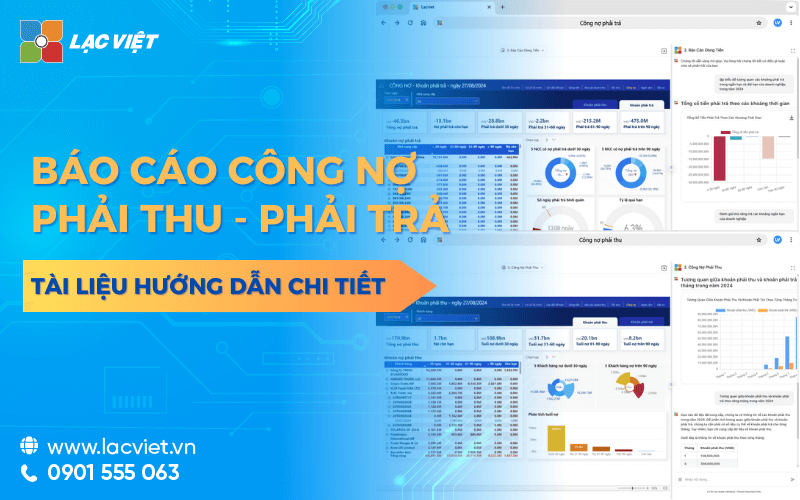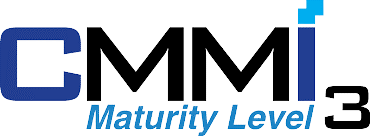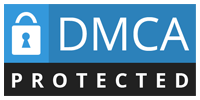Debt management is not merely track the receivables, payables, but also is a key factor determining the financial health of the business. A system report on public debt clear not only help businesses control bad debtbut also optimized the ability to recover debts and ensure business operations are not interrupted.
So how to set up reporting to help businesses optimize cash flow, minimize financial risks? In this article Lac Viet Computing will help you to understand the role of this report, the type of reporting is important, how to avoid common mistakes and application of AI technology to manage debt effectively.
Financial statements accounting related:
- Sales reports intuitive – effective
- Report the cost of production for business
1. Report what is debt?
Report on public debt is an important document to help businesses manage the accounts receivable from customers accounts payable to suppliers. This report provides an overall view about the financial obligations that helps businesses control cash flow, avoid credit risk, ensuring financial transparency.
1.1. Definition report public debt
Report on public debt is the synthetic details, accounts receivable from customers, pay suppliers in a given time period. Keeping track of the debt help businesses maintain financial stability, limit status, weight loss for cash flow to ensure solvency.
The debt to income: Is the amount of money customers owe the business after the purchase of goods or use of services, but has not paid yet.
Business can be divided into debt to income according to the following criteria:
- According to the customer: the Classification of each specific customer.
- In the age of debt: Under 30 days, 30-60 days, over 90 days.
- According to the contract/invoice: Lists the number of contracts, or bills that need recovery.
Accounts payable: Is the amount of money a business must pay to suppliers for goods or services received but not yet paid.
Business can be divided into debt to pay according to the criteria:
- According to supplier: Identify each unit offers.
- According to payment term: debt maturity, the debt is overdue.
- According to the type of goods/services: Classified according to product groups and services bought.
1.2. The purpose of the report on public debt
Report on public debt not only help businesses track cash flow, which supports optimizing financial management.
Control cash flow efficiency
- To help businesses keep track of the amount due, overdue to ensure balanced cash flow.
- The risk of insolvency do not control the account to pay.
Minimize credit risk from customers
- Track payment history of the customer to evaluate creditworthiness, limited status bad debt.
- Help business decision should continue to grant credit to customers or not.
Ensure transparency in financial
- Help business collated data with customer, supplier and internal accounting and limit errors in financial statements.
- To help businesses assess the overall financial obligations, from which adjust the trading strategy accordingly.
Support business decisions
- To help businesses assess the solvency of the client, from which optimize sales strategies.
- Support business decision the time of payment of the debt providers to optimize profits.
1.3. Risks when not managed liabilities reported effective customer
Data is not accurate or do not track the customer debt can lead to more serious consequences.
Weight loss for cash flow
- If the business doesn't track accounts receivables can lead to shortage of working capital, affecting the ability to function.
- If not, control the liabilities, the business may have difficulty in making payment, affect credibility with suppliers.
Increased risk of bad debt
- If the business is not monitored receivables, customers may delay or even not pay, leading to the risk of losing your capital.
- There is no early warning system for the liabilities coming too-term can cause large financial losses.
Influence business strategy
- When there is no accurate reports, business can't properly evaluate the financial situation, from which no decisions to expand investment or cut costs reasonable.
- 't control public debt may lose the trust of investors or partners.
2. Types of liabilities reported customer downloads
Report on public debt are important tools to help businesses control of accounts receivable from customers accounts payable to suppliers. Depending on your needs, financial management, business can select the type of report tailored to optimize cash flow, minimize credit risk.
2.1. Report the debt to income customers
Report receivables customer total of all the debts that the customer has not paid for the business. This report helps businesses track the status of debt recovery, evaluate the possibility of payment of each customer take measures to recover the debt logical.
The report must collect typically includes:
- List the customer has not paid in full: Recorded customer information, the balance of the debt, the payment term.
- Amount receivable by invoice/contract: collate each invoice or contract specific to ensure accuracy.
- Payment term and age of debt: Help business reviews debts are in any term or has expired.
Classification of receivables
- Public debt under the age of debt:
- Debt under 30 days: Public debt in maturity.
- Debt from 30-60 days: Public debt begins at risk overdue, need monitoring.
- Debt over 90 days: Public debt too prolonged, the risk of bad debt.
- Public debt according to the customers:
- Big business: Usually the payment process clear, but payment period may be extended.
- Partner retail: Has higher risk of bad debt, there should be control policies closely.
- Public debt under the contract or invoice: to Help businesses identify debts according to each specific transaction, avoiding errors when the projector.
Using the report receivables effective
- Track list customers who have public debt to prioritize recovery.
- Building policies, flexible payment based on the credit history of the customer.
- Combine accounting software to automate customer reminder payment due date.
2.2. Report the debt to pay suppliers
Report the debt to pay to help businesses keep track of debts with respect to a provider, ensure timely payments to maintain cooperation, avoid penalties due to late term.
Contents of the report to pay debt
- List supplier, the balance of the debt: Recorded amount to be paid by each supplier.
- Payment term: Determine the maturity debt, debt coming due/overdue.
- Transaction details: includes purchase contracts, invoices, receipts test.
Classification of public debt to pay
- According to payment term:
- Debt maturity: The account to immediate payment in months.
- Overdue: The account has not been paid on time, need folding handle to avoid affecting relations with suppliers.
- Long-term debt: The debt has maturity last long, usually applied to contracts shopping large fortune.
- According to supplier:
- Main suppliers: priority payment to ensure the supply of goods/services without interruption.
- Supplier: payment based on the financial situation of the business.
- According to the type of goods/services to Help businesses evaluate the level of priority after payment.
How to use the report to pay debt effectively
- Plan payment in cash flow to avoid the shortage of capital.
- Negotiate with suppliers on policies, flexible payment if the business is experiencing financial difficulties.
- Integrated ERP software to automatically remind the time of payment, avoid penalties and interest due for late payment.
For example, A manufacturing company can use the report public debt to pay for up payment plans materials in each stage, avoiding interruption of production.
2.3. Liabilities reported synthetic
Liabilities reported total cases, and business for projecting the balance of receivables – payables from that assess the ability to balance financial and cash flow.
Content report public debt synthetic
- Aggregate balances receivables/payables in each period.
- Comparison rate receivables/payables to ensure cash flow, do not lose balance.
- Cash flow analysis practice based on the debt obtained, the debt must be paid.
How to use performance reporting
- Help business forecasting financial needs, adjust plan for debt collection or payment accordingly.
- Collated with accounting data to avoid a discrepancy in the data between the parts.
- Software use AI to analyze trends, public debt, support financial decisions.
For example, If the debt to income greater debts to pay, but the client hasn't paid on time, the business may experience issues about cash flow. Synthesis report helps to detect timely treatment this condition.
2.4. Report the debt to the customer in each term of payment
This report helps businesses track the short-term debt/long-term, from which financial planning accordingly.
Report content
- Public debt coming due in 30 days: Need recovery or immediate payment to avoid the influence cash flow.
- Public debt due from 30-90 days: Need to plan, track negotiating time payment.
- Long-term public debt over 90 days: there Should be recovery strategy closely, avoid turning into bad debt.
How to use reports in term effective
- Monitoring the account, the debt coming due in order to avoid fines or lose their ability to recover.
- Financial planning to ensure cash flow is always ready for the accounts payable.
- Integrated AI to forecast the overdue debt and proposed recovery strategy logical.
3. How to report accounts receivable pay customer details
Report on public debt plays an important role in the financial control, maintain steady cash flow for the business. To report accurate, effective, businesses need to implement the specific steps to ensure full data, the right term and has high applicability.
Step 1. Collects data public debt in full precision
The first step in the process of reporting is to collect data from financial transactions, contracts, accounting documents.
Defines the data source needs to collect
- Bill of sale/purchase: Ensure all sales transactions, purchases are recorded in full.
- Economic contract: For the payment terms in the contract with the actual transaction.
- Receipts, voucher: Confirm the payment was made.
- Minutes of control public debt: collated with the customer, suppliers to ensure accurate data.
Check verification data
- Collate data public debt with ledger accounting, financial reporting, to detect flaws.
- Check out these liabilities in each invoice, the contract to ensure there are no debts would be missed.
- Verify the account, the debt was paid, but not yet updated on the system to ensure accurate data.
Step 2. Classification of public debt customers according to matching criteria
The classification of public debt help business track easier, from which it can plan, revoked, or payment of reasonable.
Classification of public debt according to the object
- Receivables customers: The debts that the customer still hasn't paid.
- Accounts payable suppliers: The debt business must pay to the supplier.
Classification of public debt over time overdue
- The debt maturity: debt need or need to pay in the states.
- The overdue 30 days: Warning risk of loss of liquidity if not recovered.
- The overdue over 90 days: Can take measures to recall more powerful to avoid loss of capital.
Classification of public debt under the contract or invoice
- Public debt according to the bill: Keep track of each invoice to ensure no missed revenues or expenditures.
- Liabilities under the contract: Help track the debt arising from the contract, ensuring timely payment.
Step 3. Check and compare the debt periodically
Periodically check, compare the debt to help businesses ensure accuracy in financial reporting, minimize the risk of dispute.
For internal passport
- Check out the difference between window public debt and general ledger case.
- Reviews liabilities have not updated to adjust timely.
Collated with customers, suppliers
- Send liabilities reported periodically to the customer to confirm the balance.
- Debt comparison with suppliers to ensure the payment due date.
- Perform regard to control public debt to avoid disputes in payment.
Adjustment of public debt if there are errors
- If there are deviations between the data in the system and, in fact, enterprises need to check your invoices and receipts related.
- Use the report revised the debt to record the adjustment in the states.
Step 4. Use accounting software to automate the report on public debt
The use of technology to help businesses reduce errors, save time, optimize the management of public debt.
Integrated accounting software to update the automatic debit
- System software helps to record public debt in real time, to avoid entering the wrong data.
- Synchronize with ERP, CRM to debt comparison with data of sales/ purchases.
Application AI in data analysis and prediction public debt
- WHO can trend analysis, customer payments, help businesses predict ability to recover the debt.
- Based on historical data, the system can propose policies, payment more flexibility to optimize cash flow.
Using the system alert the overdue debt
- Set up automatic alerts for liabilities coming due or overdue.
- Send reminder email to customers on-time payments before they are due.
- With respect to the liabilities, the software can suggest the time of payment is suitable for businesses to optimize cash flow.
Step 5. Construction policy, debt management efficiency
To ensure the debt is recovered right term, limiting credit risk, businesses need to build management policies, public debt clear.
Determine the credit policy reasonable
- Take out the credit limit is the maximum for each group of customers.
- Determine the time payment standard for each type of transaction.
- Clear rules about late fees, interest rate overdue.
Given measures to recover the debt effectively
- The set up process, reminding the customer about the payment term.
- Apply early payment discount to encourage customers to pay on time.
- Construction mechanism penalty for paying customers slow to reduce the incidence of bad debt.
Optimize cash flow through debt management
- Reconcile receivables, payable to the fund balance.
- Use the report public debt to set up payment plans, sensible, avoid shortage of working capital.
4. Common mistakes when drawing up the report on public debt
The report is an important part in financial management business. However, many businesses still have the common mistakes that lead to errors in data, loss of control, cash flow, increase financial risk.
Below are the common errors and how to fix in order to optimize report on public debt.
4.1. Do not track public debt periodically
- No business process test public debt often, only processed when a problem arises.
- Data public debt is not timely updates of data entry or errors in the reference stock from.
- Teen the system alerts the overdue debt, leading to a loss of control receivables.
Consequences
- Troubled business in debt collection when customers forget or deliberately delaying payment.
- The overdue debt on the rise, affecting the cash flow of business operations.
- There is no basis to evaluate the credit history of customers and business decisions accordingly.
Solution
- The set up process for debt comparison periodically (monthly, quarterly) to ensure data is always accurate.
- Use accounting software automatically updates the public debt and integrated with the system of sales management (ERP, CRM) to avoid errors when entering data.
- Apply warning system public debt: Send notifications to remind customers about debt to term, to help businesses be more active in the recovery of the debt.
For example, An enterprise ecommerce software use financial management for public debt customers in real time, thanks to that early detection of debt coming due, solving ago when bad debt arises.
4.2. No classification of public debt clear
- Business only track public debt in a general way that is not classified according to each group of customers, suppliers, or under the age of debt.
- There is no method to determine public debt are high risk, which leads to difficulties in managing withdrawal.
- Reporting system is not the appropriate design, lack of flexibility when retrieving data.
Consequences
- Difficult to track the status of public debt according to each group of customers or suppliers.
- Easy to miss the debt coming due or overdue, cause weight loss for cash flow.
- Difficulty in making the credit policy flexibility for each group of customers.
Solution
- Classification of public debt according to the groups of customers, suppliers, duration debt to have recovery strategy logical.
- Reporting details on each following criteria:
- Public debt according to the customers: Identify major customers, regular customers delay payment.
- Public debt under the age of debt: Group debts under 30 days, 30-60 days, over 90 days.
- Liabilities under the contract/invoice: For projecting accurate each debt with the relevant contract.
- Use accounting software have the ability to access data quickly, which helps businesses easily track control public debt according to each group of objects.
4.3. No plan debt collection, reasonable
- There is no specific process in the recovery of the debt, leading to a situation of customers delayed payment or non-payment.
- Business no method of evaluating the solvency of the customer, leading to the issuance of credit no control over.
- Lack of tool support, debt collection, cause loss of much time and effort in collating remind customers.
Consequences
- The rate of overdue debt is high, leading to increased risk of bad debts, loss of capital.
- Businesses lose the ability to control cash flow, affect the other business activities.
- Cause loss of trust with investors and partners of financial statements is not transparent.
Solution
- Building plan withdrawal liabilities in each stage:
- Phase 1: Remind clients first 7-10 days when the debt coming due.
- Stage 2: Send an email/message with a reminder about the amount of debt due from 7-14 days.
- Stage 3: direct Calls, working with the finance department of the customer if the debt past due over 30 days.
- Stage 4: If the debt is overdue over 90 days, apply legal remedies or discontinue providing the service.
- Application AI to forecast insolvency of the customer: Finance AI Agent can analyze payment history to risk assessment, public debt, from which the proposed recovery strategy logical.
- Applicable preferential policies for customers early payment: Offer discount if customer pre-term payments to improve cash flow.
For example: A distribution company consumer goods has implemented AI system to analyze the payment history of the customer, thereby determining the customer risk of slow payment and send timely reminders. Thanks to that, the rate of recovery of the debt by the deadline increased by 20% within 6 months.
4.4. No leverage technology to manage public debt
- Businesses still use Excel or manual methods to track the debt, causing difficulty in managing big data.
- Lack of integration between the accounting system and management software sales, led to a discrepancy in the data.
- There is no warning system automatically when the debt coming due or overdue.
Consequences
- Data public debt is not accurate, affect financial decisions.
- Take more time for lighting public debt, prone to flaws.
- Difficult to expand the business scale of public debt is not tightly controlled.
Solution
- Use accounting software automates the management of public debt to Finance AI Agent to update the data in real time.
- Integrated ERP systems and software sales manager to synchronize data public debt with financial statements.
- App AI technology to analyze payment trends, from that give early warning of the public debt at high risk.
5. App AI in the management report, the debt – Finance AI Agent of Vietnam
In the context of technology development, strong business can't just rely on the traditional method to manage public debt that needs the application of modern technology to optimize processes. Finance AI Agent of Lac Viet is an advanced solution to help businesses automate tracking of assets, analysis of payment trends and propose the strategy of debt effectively.
5.1. Automation track receivables/payables
One of the biggest challenges for businesses is to manage public debt, crafts, easily lead to errors, delays, loss of data control. Finance AI Agent business support fully automated process for tracking public debt help synchronize data from various sources, minimize errors, and data entry.
Sync data public debt in real time
- Finance AI Agent direct integration with ERP systems and accounting software to ensure data public debt is accurately updated in a timely manner.
- Auto contrast balance public debt between accounting, contracts, billing actually helps detect deviations quickly.
- To help businesses minimize risk, financial losses due to errors in data entry or delay, update the information.
Warning liabilities overdue payment reminder
- The AI system has the ability to automatically send email or text messages to remind customers about the debt coming due or overdue.
- Integration features smart alerts to help business priority handling the account liabilities have a high risk to limit bad debt.
- The system can set the cycle to remind flexible depending on client group and contract.
5.2. Trend analysis, customer payments
Don't just stop at keeping track of the debt, Finance AI Agent also has the ability to analyze payment data in the past to make forecasts about the payment behavior of the customer.
Specify the payment risk of the customer
The system uses AI and Machine Learning to analyze payment history, from which assess the degree of reliability of each customer.
Ranking customers according to the criteria:
- Customer groups are always paid on time → Less risk.
- Customer groups are often delayed payment of 30-60 days → Need monitored.
- Group customers who have public debt over 90 days → the Risk of bad debt, need to have a plan special handling.
For example, If the system detects a customer constantly late payment from 60 days or more, the business can ask the customer deposit or adjust credit limits to reduce risk.
Forecast cash flow and credit strategy
- WHO has the ability to predict the moment the customer has the ability to pay, help business plan debt collection reasonable.
- Data analysis to the proposed credit policy flexibility, as the discount to the customer early payment or apply late fees, term reasonable.
- Provides visual reports on trends in public debt, that help business adjust financial strategy, cash flow more effectively.
For example: trading company can use Finance AI Agent to detect that A customer is usually paid on the first week of the month, from which send reminders at the right time to increase the proportion of debt recovery.
5.3. The proposed optimization plan debt collection
Based on historical data, the system can be proposed recovery strategy, public debt according to each customer group:
- Customers have good history → policy Holder, flexible payment, continued to maintain relations of cooperation.
- Customers tend to delay payment → proposed changes to contract terms, require a deposit or adjust the term of payment.
- Customers have the risk of bad debt → Apply policy tightens, debt collection, can switch to legal remedies if necessary.
Optimize cash flow through strategic debt collection actively
- Finance AI Agent can predict the debt coming due, helps business priority recovered the account to maintain steady cash flow.
- Proposed plan to negotiate payment with customers and help businesses find the most advantageous solution in the case of customers experiencing financial difficulties.
- Integrated policy early payment discount, help businesses encourage customers to pay early repayment to increase cash flow.
Lac Viet Financial AI Agent to solve the “anxieties” of the business
For the accounting department:
- Reduce workload and handle end report states such as summarizing, tax settlement, budgeting.
- Automatically generate reports, cash flow, debt collection, financial statements, details in short time.
For leaders:
- Provide financial picture comprehensive, real-time, to help a decision quickly.
- Support troubleshooting instant on the financial indicators, providing forecast financial strategy without waiting from the related department.
- Warning of financial risks, suggesting solutions to optimize resources.
Financial AI Agent of Lac Viet is not only a tool of financial analysis that is also a smart assistant, help businesses understand management “health” finance in a comprehensive manner. With the possibility of automation, in-depth analysis, update real-time, this is the ideal solution to the Vietnam business process optimization, financial management, strengthen competitive advantage in the market.
SIGN UP CONSULTATION AND DEMO
Any business knows how applying technology to manage public debt will have big advantage in controlling cash flow, maintain the sustainable development. Let's start by building a system liabilities reported customer professional, integrated AI technology to improve the efficiency, financial management, optimize cash flow, ensure the long-term growth for your business!














